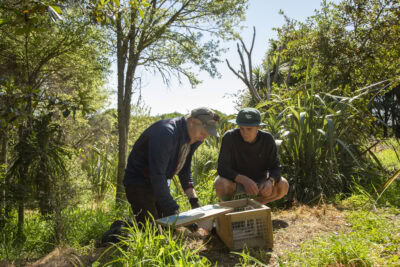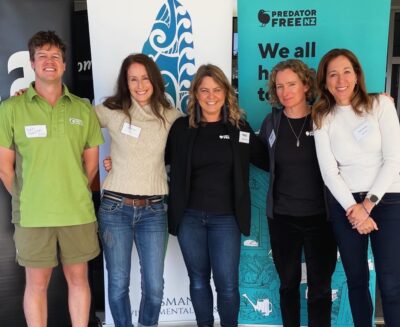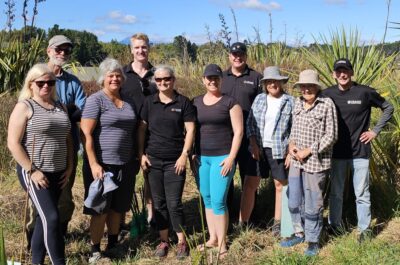TET is proud to work with NMIT’s Kaitiaki Whenua / Trainee Ranger programme to help support future conservation custodians of Aotearoa.
The Kaitiaki Whenua – Trainee Ranger programme has been operating for 21 years—almost as long as TET itself. Born out of a response to the 1995 Cave Creek tragedy, the programme was established to help strengthen the skills of new rangers coming into the Department of Conservation.
The 12-month, full-time course was initially slated to run on the West Coast. It’s unclear why that didn’t eventuate but programme tutor Geoff Button says NMIT eventually built a relationship with DOC and began running the programme out of Nelson.
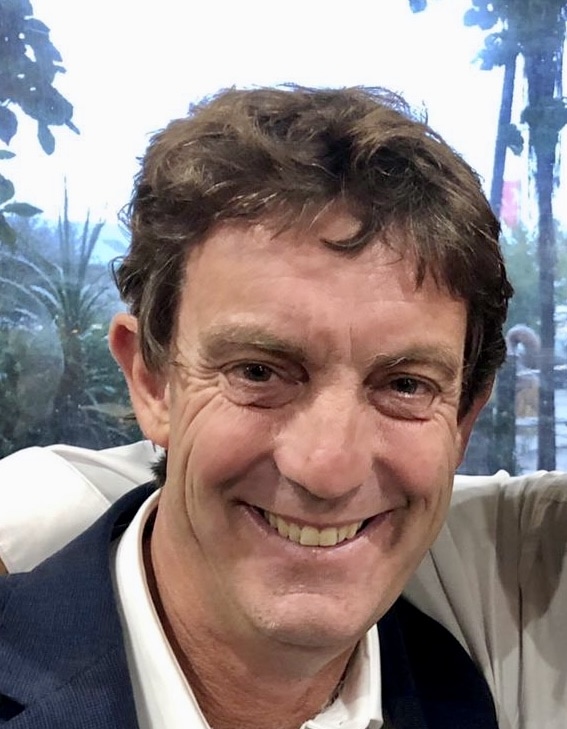
Geoff estimates 450 people have been through Kaitiaki Whenua. Demand for places is very high.
“We’ve had times where we’ve had 20 places on the programme and we had 130 applications,” he says. “That happened a few years ago.
“We average out between 80 and 100 applications per year.”
The programme has doubled its stream in the last two years but there are still more applications than places.
“We interview [applicants] because we can’t take everybody,” says Geoff. “We don’t necessarily take people with the best qualifications. We take people that are going to benefit most from the programme.”
Trainee Ranger programme blends learning with practical skills
Geoff says the aim of the programme at its simplest level is to help students achieve certification on a number of different skills and then give them practical experience as well.
“We’re not just sending people out with boxes ticked,” he says. “We’re trying to send them out with qualifications like Growsafe and how to use a chainsaw safely, and then getting [them] involved in [projects like TET’s] Wakapuaka Mouri and the Waimea Inlet Restoration.
“That contextualises the work and gets them experience on the ground. And also an understanding what it’s like if you are part of an organisation like DOC or a council working with external groups that are managing big areas—groups like [TET], or iwi—and the reality of working with contractors as well.”
Two TET projects have welcomed trainee rangers over the last 24 months.
Case study 1: Wakapuaka Mouri
The Wakapuaka Mouri project has hosted two intakes from the programme. The first group helped build the project’s nursery. The second group was involved in constructing a greenhouse-type structure, pricking out seedlings, and some in-depth predator control work—putting out new traplines, monitoring, and updating information on the Trap.nz app.
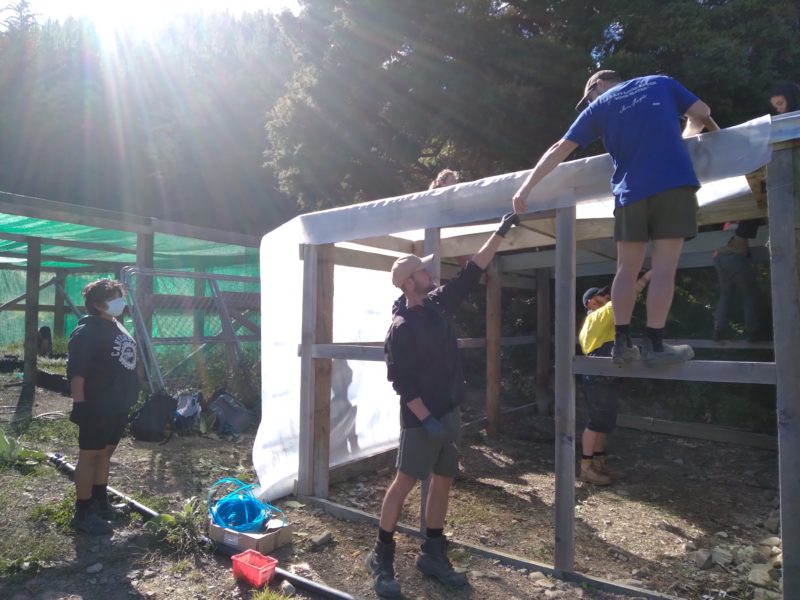
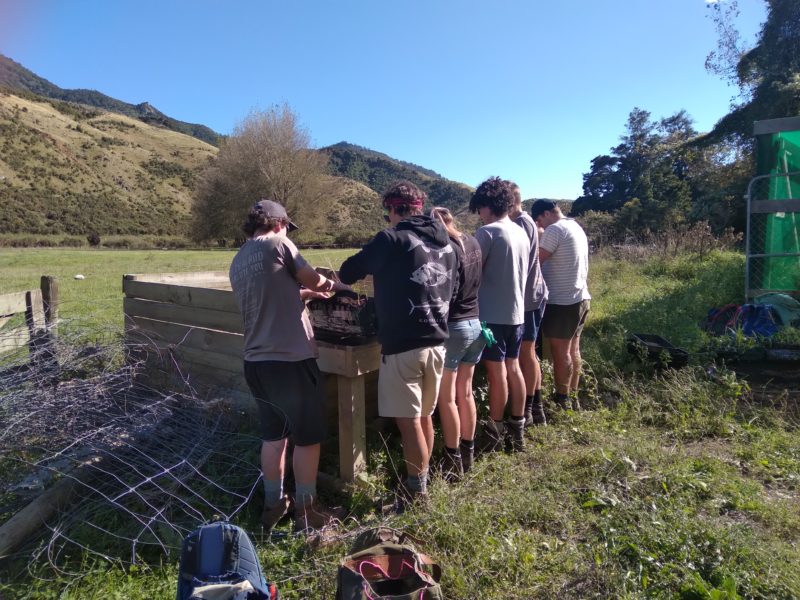
Project lead Sophia Bisdee says it’s important that the students feel they’re contributing in a meaningful way.
“If we’re having the students out here, I’m really keen that we’re upskilling them at the same time,” she says. “So whatever jobs we have [for] them to do, I always have some sort of expert passing on some good knowledge to them. We don’t want it to just be about free labour.
“And it’s cool when the students get to prick out the plants and then the following year, they’re the plants that they end up putting in the ground.”
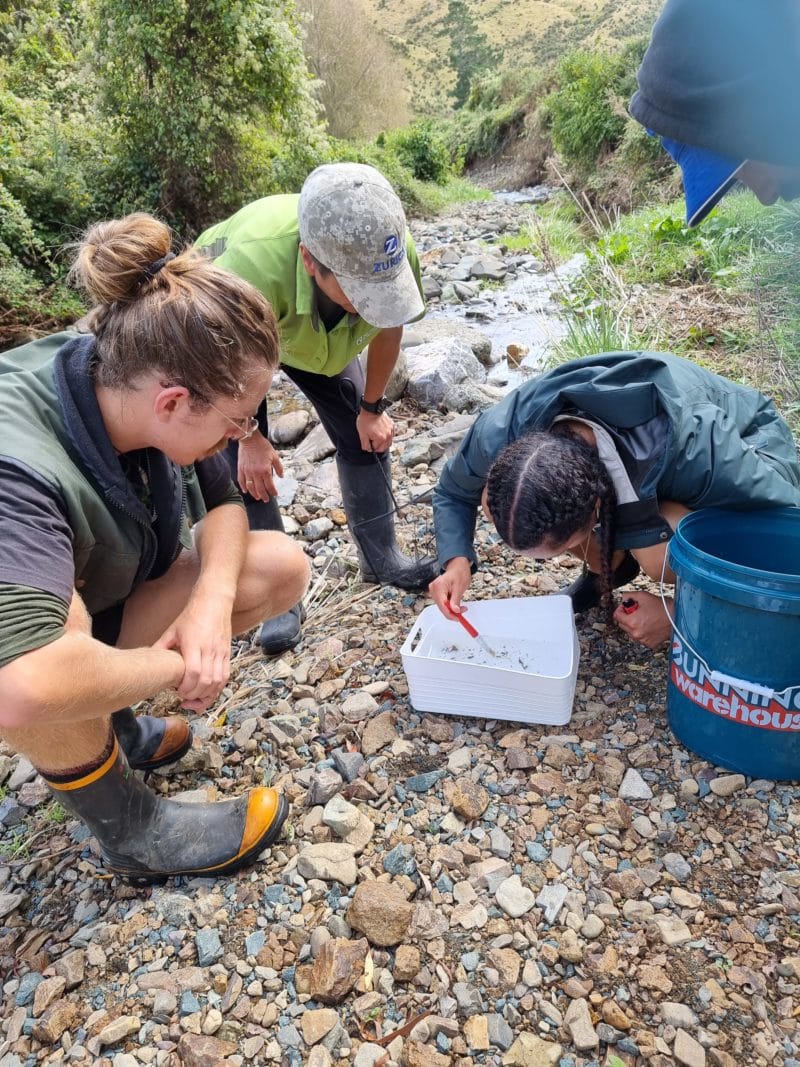
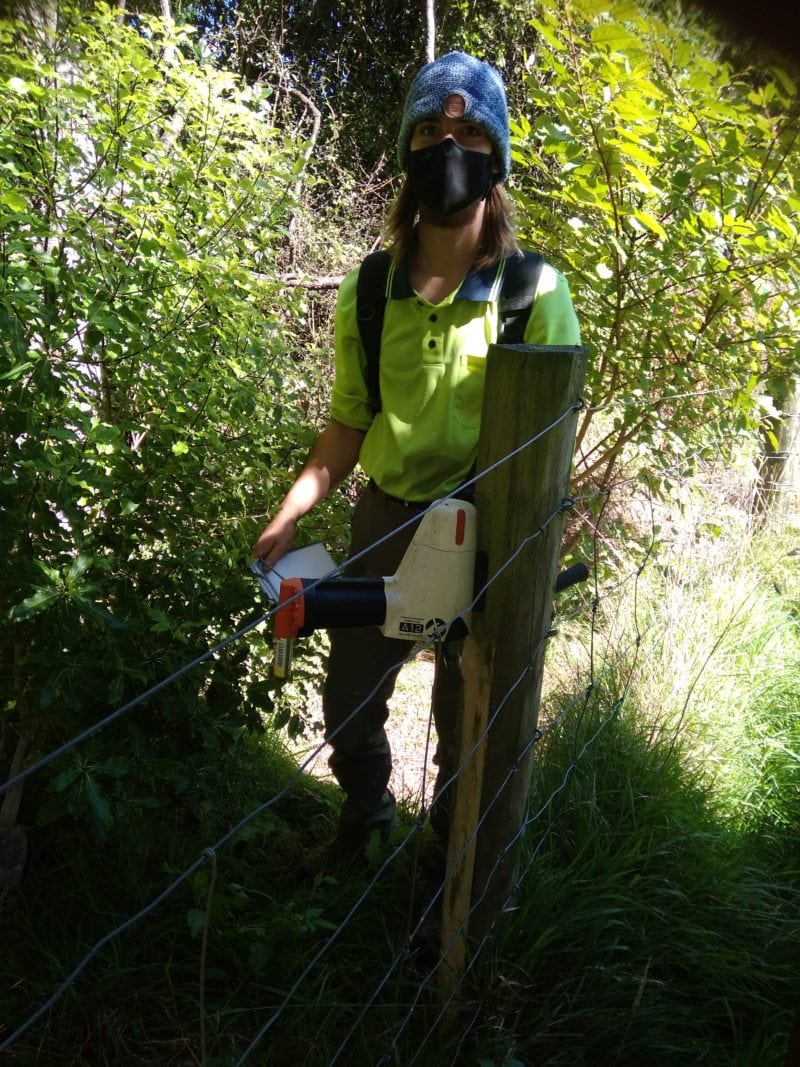
This year, Sophia and her team have also worked with eight students attending NMIT’s affiliated Project Moturoa programme. Like Kaitiaki Whenua, the course is full-time over a year. Students still work alongside DOC and regional council staff but the focus is on learning conservation skills from a Māori worldview, incorporating local iwi and marae-based education.
“We’ve had those students out helping with some cultural health monitoring that we do on the Wakapuaka River as part of the Wakapuaka Mouri project,” says Sophia.
Overall, she’s delighted with the partnership arrangement with NMIT. “This year’s group was really motivated. They already come with really good skills and are excited about the conservation space.
“So it’s good, it’s a good fit.”
Case study 2: Waimea Inlet Restoration
A project the size of this one needs all the help it can get, particularly when it comes to tree planting. Planting’s been the biggest contribution Kaitiaki Whenua trainees have made to the Waimea Inlet Restoration, and project coordinator Julie Newell says they’ve done a great job. Some have even gone above and beyond their course requirements.
“Over last winter’s public planting days, there would have been six or eight of them who turned up to help on Sundays, volunteering on the weekends,” she says.
She was able to give one of those trainees some paid work a couple of months ago—setting up, running, and packing up a planting day.
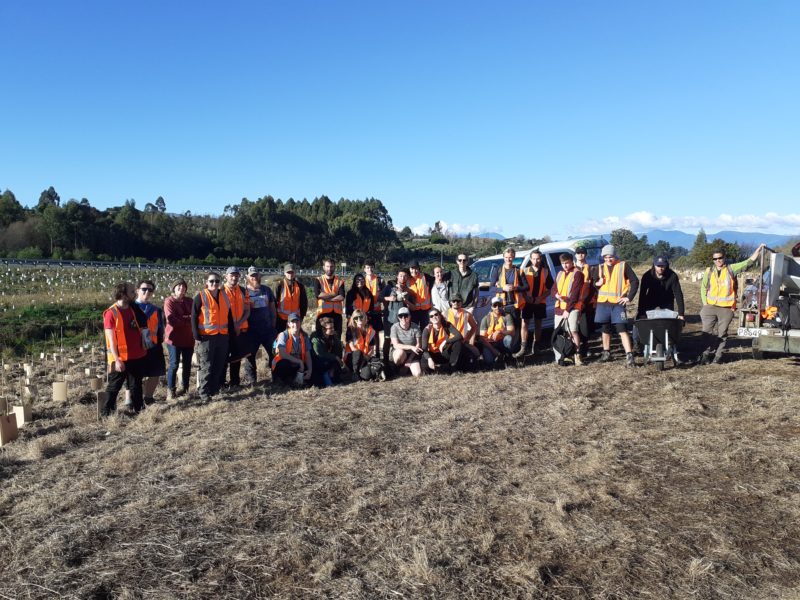
This year’s tainees will be helping out at the Matahua wetland near the Mapua turnoff, where previous intakes have also done the mahi. Around 3,000 plants will need to go in the ground. “It’ll just be about filling in the last few gaps there and finishing off the planting to that reserve,” Julie says.
“It’ll be a nice follow-on for them, to have been doing the planting from the start of the reserve being planted, through to the last few trees going in.”
The trainees have also worked at the Hunter Brown Reserve on Rough Island, and Project Moturoa students contributed to planting on the south coast of Moturoa (Rabbit Island).
“[Trainee rangers] are responsible for several thousand extra plants going in around the Waimea Estuary,” Julie says. “They have a wonderful energy and they’re keen to make a difference.
“They’ve contributed a great deal to the project and it’s been really valuable.”
She wishes recent graduates well for the future. “There’s a lot of good talent and wonderful people graduating from that course every year. The tutors do a fantastic job.”
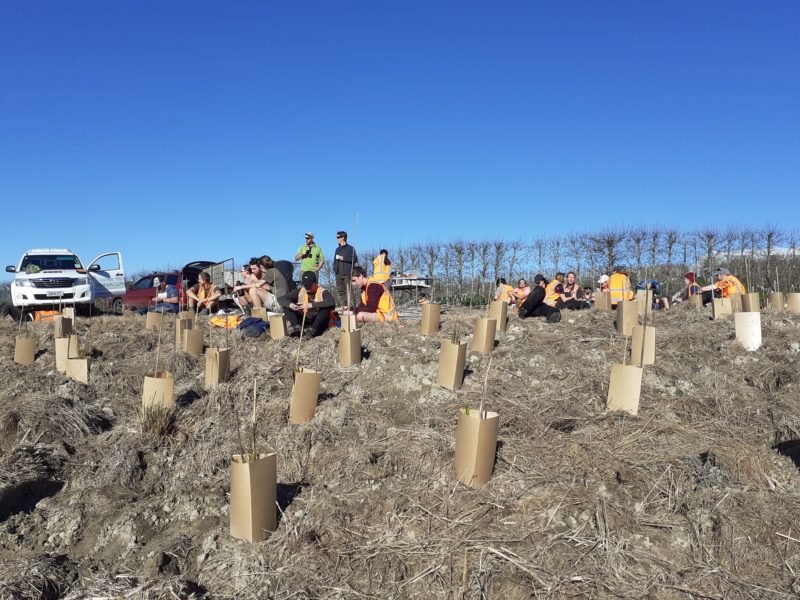
Former NMIT graduates completing the circle
The Kaitiaki Whenua – Trainee Ranger programme begins each July. For a number of years, DOC has offered six paid positions at the end of every programme, “… and we always hope this continues,” says Geoff Button. He estimates another eight or nine graduating students are employed by DOC outside of that.
“We usually have around 35–40 students graduating each year and about 80–90% end up in conservation roles, some [with] DOC, some not,” he says.
Graduates are spread all over Aotearoa, including the Great Barrier area, south Marlborough, Nelson Lakes, Wairarapa, New Plymouth and Turangi. Geoff says many stay in touch via the Facebook pages NMIT sets up for each year, and there are occasional reunions.
“They get on well. A huge part of what we’re doing with them is teamwork, because it’s so important in a conservation setting,” he says. “If you go into the back hills for 10 days, a person that rubs everyone up the wrong way is difficult to deal with.
“So we really work on that group dynamic thing as well.”
After eight years of involvement with the programme, he’s seeing former trainees rising within the ranks.
“We are now dealing with ex trainee rangers who are recuiting this lot of trainee rangers for summer placements and for jobs,” he says.
“So it’s quite nice that you get the full circle.”

